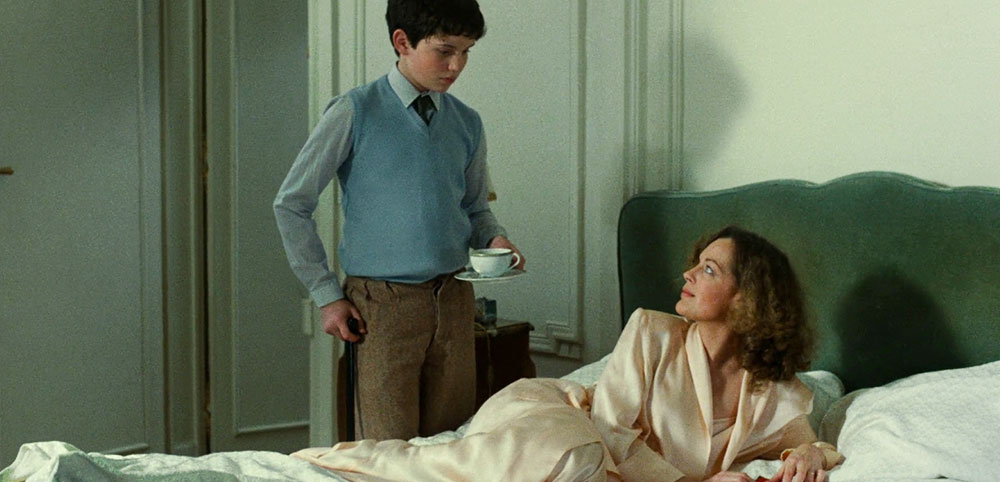Romy against the nazi
The Passerby
Cult. The last Romy Schneider ‘s film is being released in restaured version (Les Acacias). Concluing a long series of movie about nazism, the deutsch actress do a “mea-culpa” in beauty.
By Paola Dicelli

In a documentary about the IIIrd Reich, we often saw this amaterous video where a group of aryans children play around Adolf Hitler. Among those tiny blond heads, a girlwho is around three years old, and who believes innocently stend the afternoon at her neighbourg of Berchtesgaden. Her name : Rosemarie Albach-Retty, the futur Romy Schneider, that many years after this event, will understand her dark past. Her mother, Magda Schneider a german movie star, was under the propaganda the great friend of the Fürher and much more (as Romy told to the feminist Alice Schwartzer, at the end of her life).
”Romy Schneider will even say in her diary: "For me, it's more than just a movie, a lot more."
To fight her shame, the german actress tried her all life to repare the unease, like she were the direct instegator. First, in her private life (she married a jude, Harry Meyer who escaped from the concentration camps and gave birth to “David” and “Sarah”), but mostly in her artistic choices. Her filmography counts at least seven films which are linked to judaism and/or the Second World War. Bloomfield (1969, a little forgotten) was shot in Israel. In The Train (1973) of Pierre Garnier-Deferre, in Vengeance One by One (1975) of Robert Enrico or Group Portrait with lady (1977) of Aleksandar Petrovic, Romy Schneider camps either young Jews hidden under Nazism, or resistant. Always victims, never executioners. It is the rule.
More than a movie
Even in movies which does not talk about the Second World War, the ex-Sissi managed to play jewish women, without noticing there is an impact on the story. For instance, The Lady Banker, her character Emma Eckert marries the family friend Moïse Nathanson, and in Womanlight of Costa-Gavras, she plays Lydia Tovals, a character who have russian and jewish origins. There were a willing to emanticate from the past which is strenghten in the Passerby of Jacques Rouffio, his last movie, in 1982.
Adapted from the Joseph Kessel’s book, which she loved, the film tells the trial of Max Baumstein, a sexagenarian who shoot dead the Paraguayan ambassador, a former Nazi who killed his family. Romy plays two roles : that of Lina, the wife of Max and that of Elsa Wiener, a German singer who saves and collects the young Max, during the war. In the image, the actress gives the replica of her friend Michel Piccoli (The Things of Life, Max and the Junkmen …) and appears very sensitive. Maybe it has do to with the desasters she experienced at the begining of the 80’s (her divorce with Daniel Biasino, a tumor on the right kidney and most of all the accidental death of her son David at the age of fourteen years old).
We especially remember the tears of Romy Scheinder when she listen to Mendelssohn, played by the young Wadelin Werner. The Passerby is the culmination of a long film mea-culpa. Even if Jacques Rouffio does not have the talent of Claude Sautet and that the cinema of the 80’s, with here an avalanche of flashbacks, does not have the charm of that of the 70’s, the actress delivers all its rage there. As when she fights against a dozen Nazis who strive on the young Max (iconic scene recently cited in the third season of the series The Man of the High Castle on Amazon Prime). Romy Schneider will even say in her diary: “For me, it’s more than just a movie, a lot more.”
Few days after the release of the film, the 29th May 1982, she committed suicide. And as a last snub to the Germany of the 30s she will be buried, with Star of David around the neck.


